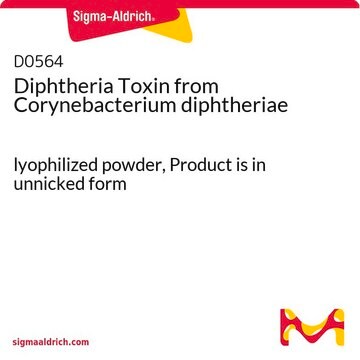O100
Oxotremorine M
solid
Sinônimo(s):
N,N,N,-Trimethyl-4-(2-oxo-1-pyrrolidinyl)-2-butyn-1-ammonium iodide, Oxotremorine methiodide
Selecione um tamanho
Selecione um tamanho
About This Item
Produtos recomendados
Formulário
solid
cor
white
solubilidade
H2O: 24 mg/mL
ethanol: 4.6 mg/mL
temperatura de armazenamento
2-8°C
cadeia de caracteres SMILES
[I-].C[N+](C)(C)CC#CCN1CCCC1=O
InChI
1S/C11H19N2O.HI/c1-13(2,3)10-5-4-8-12-9-6-7-11(12)14;/h6-10H2,1-3H3;1H/q+1;/p-1
chave InChI
VVLMSCJCXMBGDI-UHFFFAOYSA-M
Informações sobre genes
human ... CHRM1(1128) , CHRM2(1129) , CHRM3(1131) , CHRM4(1132) , CHRM5(1133)
Aplicação
- to study its acute effects on the movement of Caenorhabditis elegans[1]
- to treat hippocampal neurons for studying fibroblast growth factor receptor 1 (FGFR1) phosphorylation[2]
- to induce bladder overactivity in rats[3]
Ações bioquímicas/fisiológicas
Características e benefícios
Palavra indicadora
Danger
Frases de perigo
Declarações de precaução
Classificações de perigo
Acute Tox. 1 Inhalation - Acute Tox. 2 Dermal - Acute Tox. 2 Oral
Código de classe de armazenamento
6.1A - Combustible acute toxic Cat. 1 and 2 / very toxic hazardous materials
Classe de risco de água (WGK)
WGK 3
Ponto de fulgor (°F)
Not applicable
Ponto de fulgor (°C)
Not applicable
Equipamento de proteção individual
Eyeshields, Gloves, type N95 (US)
Escolha uma das versões mais recentes:
Certificados de análise (COA)
Não está vendo a versão correta?
Se precisar de uma versão específica, você pode procurar um certificado específico pelo número do lote ou da remessa.
Já possui este produto?
Encontre a documentação dos produtos que você adquiriu recentemente na biblioteca de documentos.
Os clientes também visualizaram
Active Filters
Nossa equipe de cientistas tem experiência em todas as áreas de pesquisa, incluindo Life Sciences, ciência de materiais, síntese química, cromatografia, química analítica e muitas outras.
Entre em contato com a assistência técnica












